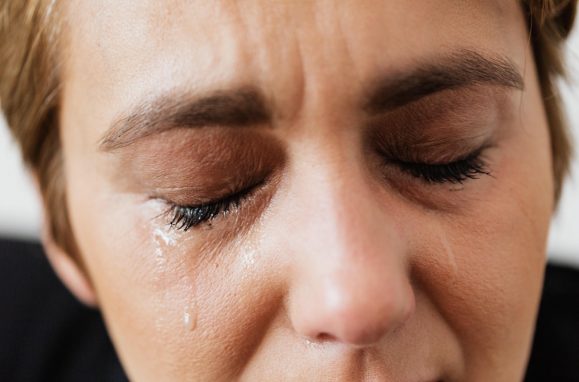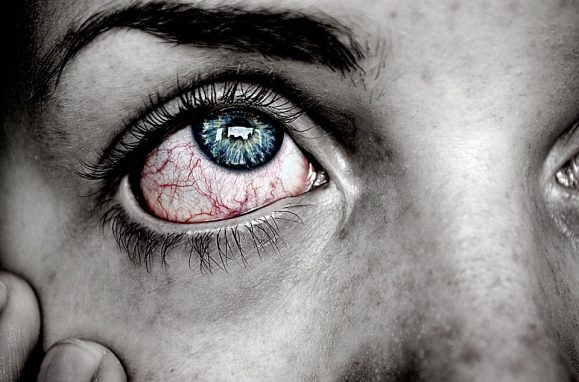It was in 2008, while pregnant with her second child, that nursing student Rafaela Santana Oliveira Silva, now 42 years old, started having symptoms such as hair loss, body itching, fatigue and feeling dry eyes and mouth.
However, the woman, who lives in Salvador, Brazil, ended up dedicating herself to caring for her newborn child and left health care aside.
Four years later, he noticed that the symptoms, rather than getting better, were getting worse. It took eight years and dozens of consultations with the most varied specialists – dentist, ophthalmologist, dermatologist and neurologist. There was no diagnosis.
“As time went on, my symptoms only got worse. I no longer produced tears or saliva, I couldn’t cry and to eat I needed to drink liquid together (with food). I started having very strong pain in my joints and constant fatigue that prevented me from doing simple day-to-day activities, ”she detailed.
At that time, due to intense pain, the student says she had reduced mobility and moved with difficulty. “I was diagnosed with fibromyalgia, but I knew it wasn’t just that. That I had an extra illness. I was also diagnosed with lupus, but the doctors were wrong,” she recalled.
Rafaela says that while going from doctor to doctor, in search of a diagnosis, I thought I had psychiatric problemssince many times she heard from people and professionals that “it was not possible for her to be in so much pain” as she said.
“I felt pain in my whole body and from so much saying that it was not possible, I thought I was going crazy. That the pains were not real but psychological, ”she recalled. She also sought psychological help to deal with the situation.
It was during a consultation with a general practitioner, at the end of 2019, that the hypothesis that Rafaela had the Sjögren’s syndrome – a rare condition that causes dryness of the skin, eyes, and mouth, as well as affecting other body systems.
“I was referred to the rheumatologist and he asked for a series of tests. Six months later came the diagnosis: he had Sjögren’s syndrome. I had never heard of it and had no idea what it was,” he said.
O diagnosis brought relief, but also fear. In addition to having to deal with the daily pain caused by the disease, Rafaela claims that she had to face people’s prejudice.
“Many people look and because I don’t have a physical sign of the disease, because it is ‘invisible’, they doubt that it really exists. People don’t understand my fatigue and body aches. I already had to show the medical certificate for them to believe it, ”she reported.
To understand more about the disease, the student began to research content that could help her in this phase of adaptation to her new life. She created an Instagram page where she talks about the disease and shares her experience.
“It is different for a doctor to speak and a person with the disease to speak. That’s why I try to show a little of my life and I talk a lot with other people who also have the syndrome,” he said.
There is no cure for Sjögren’s syndrome and treatment is carried out by a multidisciplinary team that includes a rheumatologist, ophthalmologist and dentist.
To ease the symptoms of dry skin, eyes and mouth, Rafaela uses specific products. “It’s a new life, because the drugs cause a lot of side effects. One day you’re fine and the next you’re so tired you can’t get out of bed. It’s a daily struggle,” she said.
Sjogren’s syndrome, also known as sicca syndromeis a rare, chronic and autoimmune disease, whose main characteristic is eye and mouth dryness associated with the presence of signs of glandular inflammation.
Lymphocytes invade some organs and glands, especially the lacrimal and salivary ones, generating an inflammatory process that impairs their functioning. Patients with the disease also have dry skin, nose and vagina, fatigue, arthralgias and arthritis.
“The person has a feeling of dryness, irritation, itching, redness, burning and feeling of sand in the eyes. There may also be difficulty opening your eyes in the morning, blurred vision and discomfort when reading, watching TV or staying in front of the computer for a long time. Environmental factors such as wind, fans, air conditioning and low humidity aggravate the situation”, explained Keila Monteiro de Carvalho, professor of ophthalmology at FCM/Unicamp.
In addition, other organs in the body such as the kidneys, lungs, liver, pancreas and central nervous system can also be affected. The appearance of Sjögren’s syndrome is more common in women between 40 and 50 years old and the proportion of women and men affected is about 9 to 1.
It is still not known what causes Sjögren’s syndrome and why it only manifests itself in adulthood. According to experts, it is believed that the disease develops due to three main factors: genetic, environmental and hormonal (which would explain the higher frequency in women).
There is no test that alone defines the diagnosis of Sjögren’s syndrome. For this, the doctor considers characteristics such as: symptoms, changes in the clinical examination, examinations performed by an ophthalmologist, the results of laboratory and imaging tests and the result of a biopsy of the small salivary glands located on the inner surface of the lower lip. .
There is no cure for the syndrome, and treatment varies according to the symptoms presented by each patient, requiring multidisciplinary follow-up.
“A The disease has a very variable clinical picture.. Some patients only have symptoms of dryness, while others have serious organic involvement, such as the neurological one,” explained Sandra Gofinet Pasoto, assistant physician at the Rheumatology Service, Hospital das Clínicas da Faculdade de Medicina da USP (HCFMUSP).
“Some general measures help reduce dryness of the mucous membranes: avoid dry environments, use humidifiers; protect eyes from sunlight and wind when wearing glasses; not wearing contact lenses; drink fluids adequately; use moisturizing creams on the skin and lips and do not smoke; are some of them”, continued the coordinator of the Sjögren’s Syndrome Commission of the Brazilian Society of Rheumatology.
“As for systemic involvement, glucocorticoids, immunosuppressants and some biological agents can be used”, he added.
Furthermore, according to experts, it is a change in habits is needed such as avoiding the consumption of sweets, using soaps without alcohol or perfumes, avoiding staying in environments with air conditioning or wind, and not using devices with screens – such as computers and cell phones – for extended periods of time.
“Sjögren’s syndrome requires attention because it can trigger other comorbidities such as pulmonary involvement, renal manifestations, peripheral nervous system and central nervous system. Other manifestations, such as headache, cognitive dysfunction and mood disorders, are also very common”, explained rheumatologist Marco Antônio Araújo da Rocha Loures, president of the Brazilian Society of Rheumatology.
“Hematological manifestations are characterized by anemia and low defense by the fall of leukocytes. Pericarditis, valve damage, myocarditis and arrhythmias can be cardiac manifestations. Pulmonary hypertension occurs, ”she concluded.


